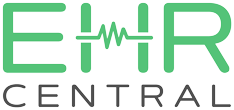The Benefits of Telehealth in Modern Healthcare
In recent years, the advancement of technology has revolutionized various sectors, and healthcare is no exception. Telehealth, also known as telemedicine, has emerged as a powerful tool in modern healthcare, enabling patients and healthcare professionals to connect remotely

through electronic communication channels. Telehealth services in the USA have witnessed remarkable growth, offering numerous benefits that improve access to care, increase efficiency, and enhance patient outcomes. This article will delve into the key advantages of telehealth and how it is transforming the landscape of healthcare in the United States.
Enhanced Accessibility
One of the primary advantages of telehealth services in the USA is the improved accessibility of healthcare for patients, particularly those in remote or underserved areas. Telehealth eliminates geographical barriers by connecting patients with healthcare professionals, regardless of their location. Patients can consult specialists and receive expert opinions without the need for long-distance travel or spending hours in waiting rooms. This is particularly beneficial for individuals with mobility limitations, elderly patients, or those living in rural areas with limited healthcare facilities.
Convenience and Time Savings
Telehealth provides convenience and significant time savings for both patients and healthcare providers. Patients can schedule virtual appointments at their convenience, reducing the need to take time off work or arrange transportation to a healthcare facility. Telemedicine appointments also eliminate waiting room delays, as patients can join virtual sessions promptly, reducing overall waiting times.
For healthcare professionals, telehealth allows them to efficiently manage their time by providing virtual consultations, addressing minor concerns remotely, and prioritizing in-person visits for critical cases. This optimization of healthcare resources improves efficiency and allows medical practitioners to allocate their time effectively, ultimately benefiting patients.
How EHRCentral enhances your healthcare practice?
Cost-Effectiveness
mHospital offers a cost-effective alternative to traditional healthcare. Virtual consultations generally have lower fees compared to in-person visits, as there are reduced overhead costs associated with maintaining a physical clinic. Patients can save money on transportation, parking fees, and other expenses related to traveling to a healthcare facility. Furthermore, telehealth eliminates unnecessary emergency room visits for minor conditions, reducing healthcare costs for patients and insurance providers.
Continuity of Care
Telehealth plays a crucial role in ensuring continuity of care, particularly for patients with chronic conditions or those in need of regular follow-ups. Through virtual visits, healthcare providers can monitor patients’ progress, adjust treatment plans, and provide ongoing support without the need for frequent in-person appointments. This approach enhances patient engagement and compliance, leading to better health outcomes.
Additionally, telehealth facilitates seamless coordination among healthcare professionals involved in a patient’s care. Specialists from different locations can collaborate effectively, share medical records, and discuss treatment plans, ensuring comprehensive and coordinated care for patients.
Improved Patient Engagement and Satisfaction
Telehealth services empower patients to take an active role in managing their health. With virtual consultations, individuals can access their medical information and participate in shared decision-making with their healthcare providers. This increased involvement fosters better patient engagement and satisfaction, leading to improved adherence to treatment plans and overall health outcomes.
Moreover, telehealth eliminates the anxiety associated with face-to-face consultations for some patients. Individuals who feel uncomfortable or stressed in traditional clinical settings may find it easier to express their concerns and symptoms through virtual platforms, leading to more open and honest communication with healthcare professionals.
Remote Monitoring and Telemedicine Devices
Advancements in telehealth technology have introduced remote monitoring and the use of specialized devices that enhance the effectiveness of virtual care. Patients can now use wearable devices to track vital signs, collect health data, and transmit them to healthcare providers for analysis and timely intervention. This real-time monitoring allows for the early detection of health issues and enables healthcare professionals to intervene promptly, reducing the risk of complications and hospitalizations.
Emergency and Urgent Care Support
Telehealth services have proven to be valuable in emergency and urgent care situations. Through virtual consultations, healthcare professionals can remotely assess a patient’s condition and provide immediate guidance. This approach can be critical in situations where time is of the essence, such as determining the severity of symptoms, managing acute conditions, or offering initial triage before arranging appropriate in-person care.
Conclusion
mHospital has brought about transformative changes in modern healthcare. By breaking down geographical barriers, enhancing accessibility, and providing convenience, telehealth has revolutionized the way patients receive medical care. The cost-effectiveness, continuity of care, improved patient engagement, and remote monitoring capabilities have further solidified its role in improving healthcare outcomes. As technology continues to advance, telehealth will continue to shape the future of healthcare, making quality care more accessible, efficient, and patient-centered for individuals across the United States.





